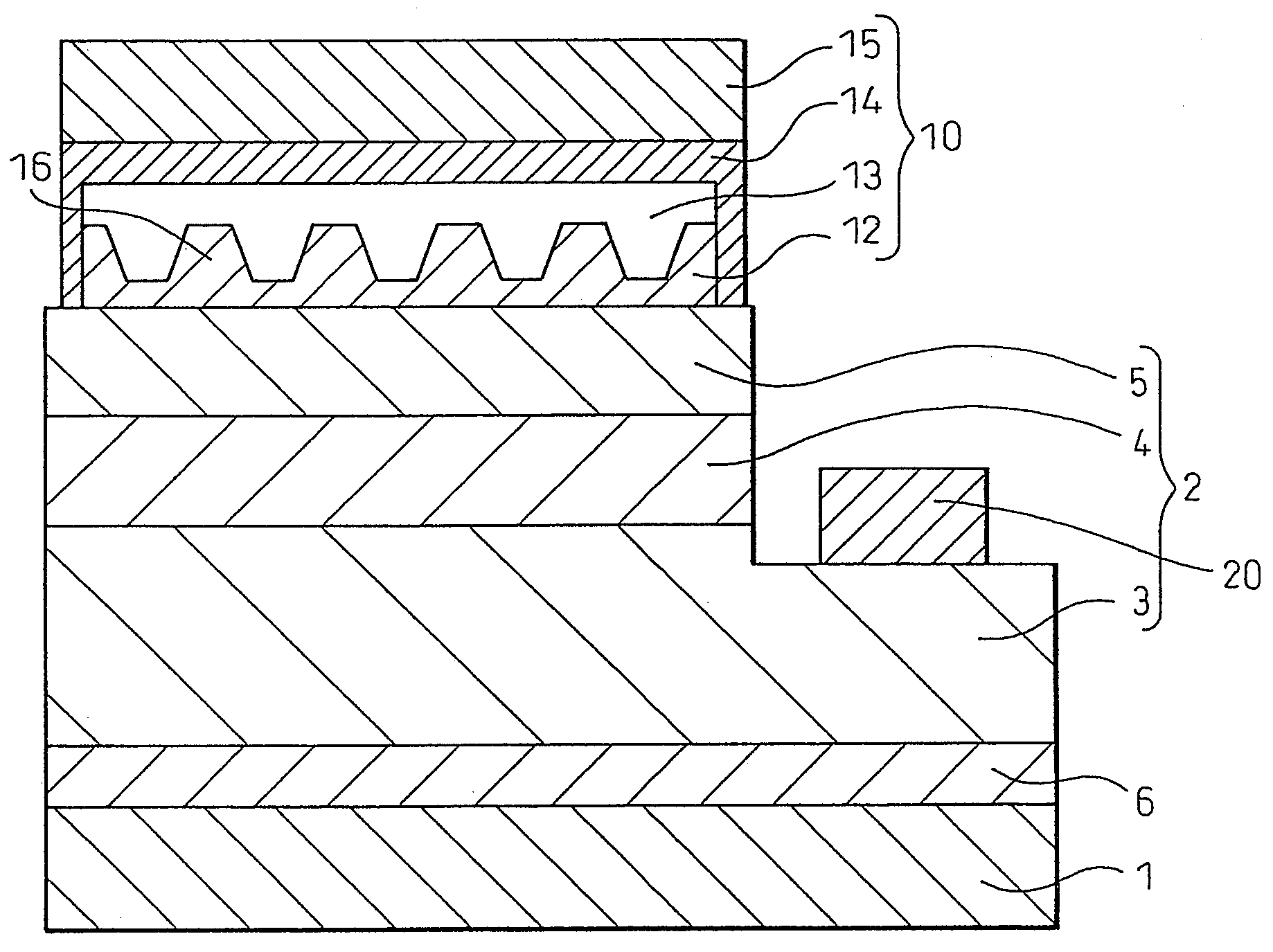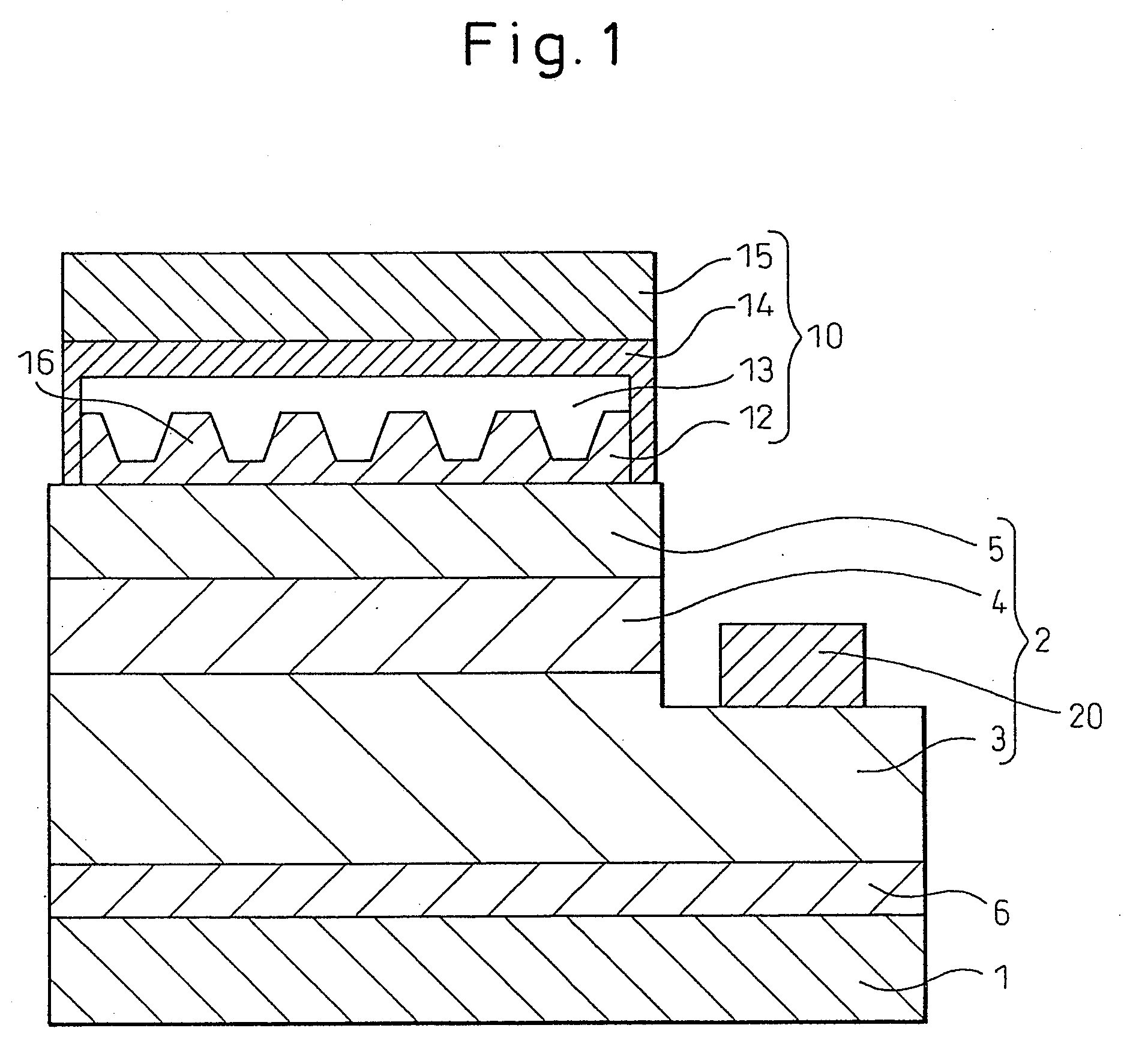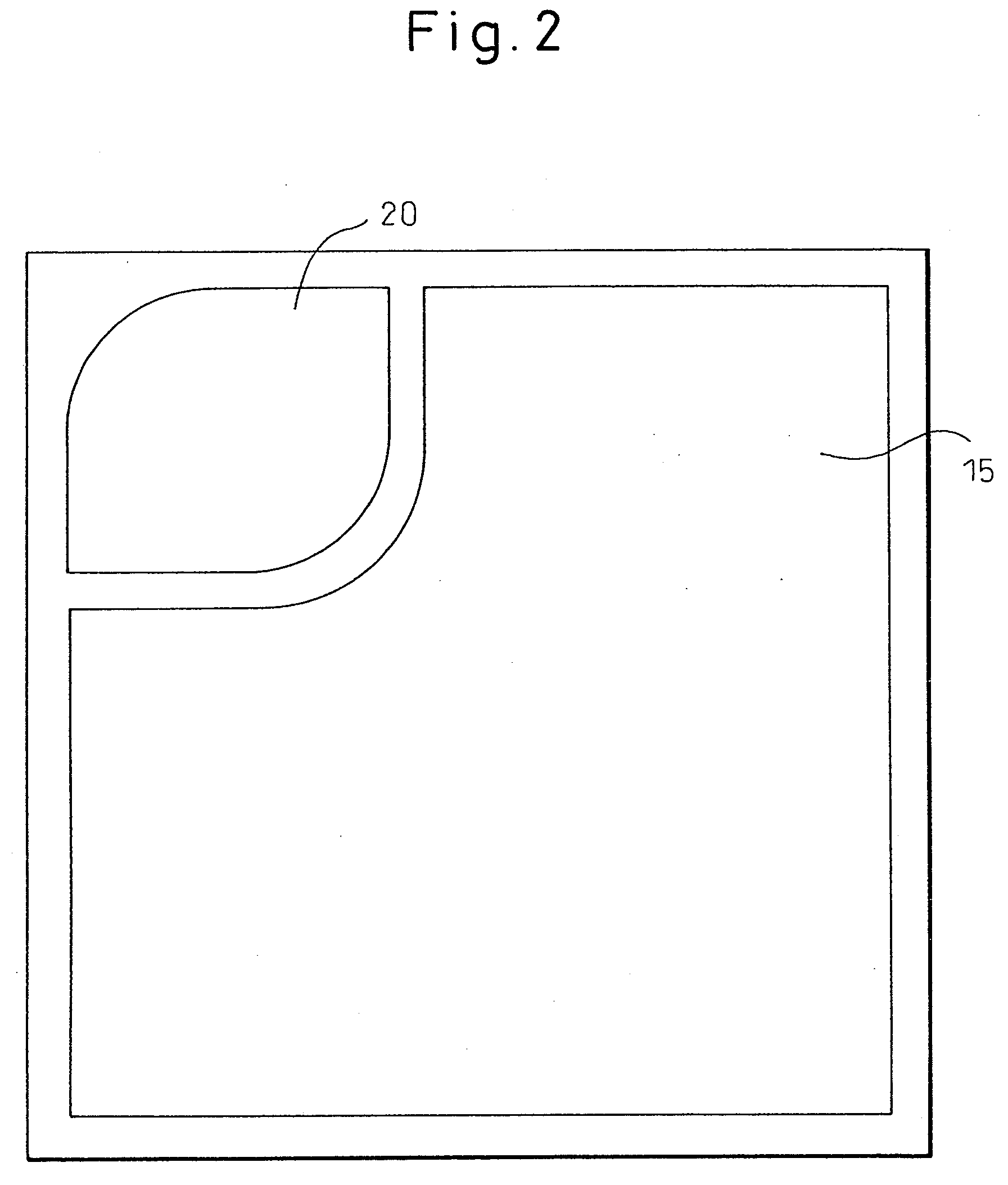Gallium nitride-based compound semiconductor light-emitting device
a compound semiconductor and light-emitting device technology, applied in the direction of semiconductor devices, basic electric elements, electrical appliances, etc., can solve the problems of inability to increase light-emitting intensity, internal quantum efficiency decrease, and light-emitting layer blockage by electrodes, etc., to achieve excellent light extraction efficiency, good crystallinity, and large light-emitting output
- Summary
- Abstract
- Description
- Claims
- Application Information
AI Technical Summary
Benefits of technology
Problems solved by technology
Method used
Image
Examples
example 1
[0103]FIG. 1 is a schematic diagram showing a cross section of the gallium nitride-based compound semiconductor light-emitting device fabricated in this example, and FIG. 2 is a schematic diagram showing a plan view of it. A gallium nitride-based compound semiconductor layer (2) was formed on a sapphire substrate (1) by interposing therebetween a buffer layer (6) of AlN. The gallium nitride-based compound semiconductor layer (2) comprises: an n-type semiconductor layer (3) formed by forming a 8-μm thick base layer of undoped GaN, a 2-μm thick, Ge-doped n-type GaN contact layer, and a 0.02-μm thick, Si-doped n-type In0.1Ga0.9N clad layer in this order; a light-emitting layer (4) of a multiple quantum well structure constructed by stacking five 16-nm thick, Si-doped GaN barrier layers and five 2.5-nm thick, In0.06Ga0.94N well layers in alternating fashion and finally forming a barrier layer on top of the uppermost well layer; and a p-type semiconductor layer (5) formed by forming a 0....
example 2
[0120]FIG. 11 is a schematic diagram showing a cross section of the gallium nitride-based compound semiconductor light-emitting device fabricated in this example, and its plan view is the same as that shown in the schematic diagram of FIG. 2 in the example 1. As in the example 1, a gallium nitride-based compound semiconductor layer (2) was formed on a sapphire substrate (1) by interposing therebetween a buffer layer (6) of AlN.
[0121]The structure of the positive electrode in this example was as follows. The positive electrode (10) was formed on the p-type AlGaN contact layer by forming thereon a positive electrode contact layer (11) made of 20-nm thick ITO, a transparent material layer (12) made of 180-nm thick SiO2, a reflective metal layer (13) made of 100-nm thick Ag, an overcoat layer (14) made of 500-nm thick Rh, and a bonding layer (15) of a five-layer structure of Au, Ti, Al, Ti, and Au (with thicknesses of 50 nm, 20 nm, 10 nm, 100 nm, and 200 nm, respectively). As in the exa...
PUM
 Login to View More
Login to View More Abstract
Description
Claims
Application Information
 Login to View More
Login to View More - R&D
- Intellectual Property
- Life Sciences
- Materials
- Tech Scout
- Unparalleled Data Quality
- Higher Quality Content
- 60% Fewer Hallucinations
Browse by: Latest US Patents, China's latest patents, Technical Efficacy Thesaurus, Application Domain, Technology Topic, Popular Technical Reports.
© 2025 PatSnap. All rights reserved.Legal|Privacy policy|Modern Slavery Act Transparency Statement|Sitemap|About US| Contact US: help@patsnap.com



